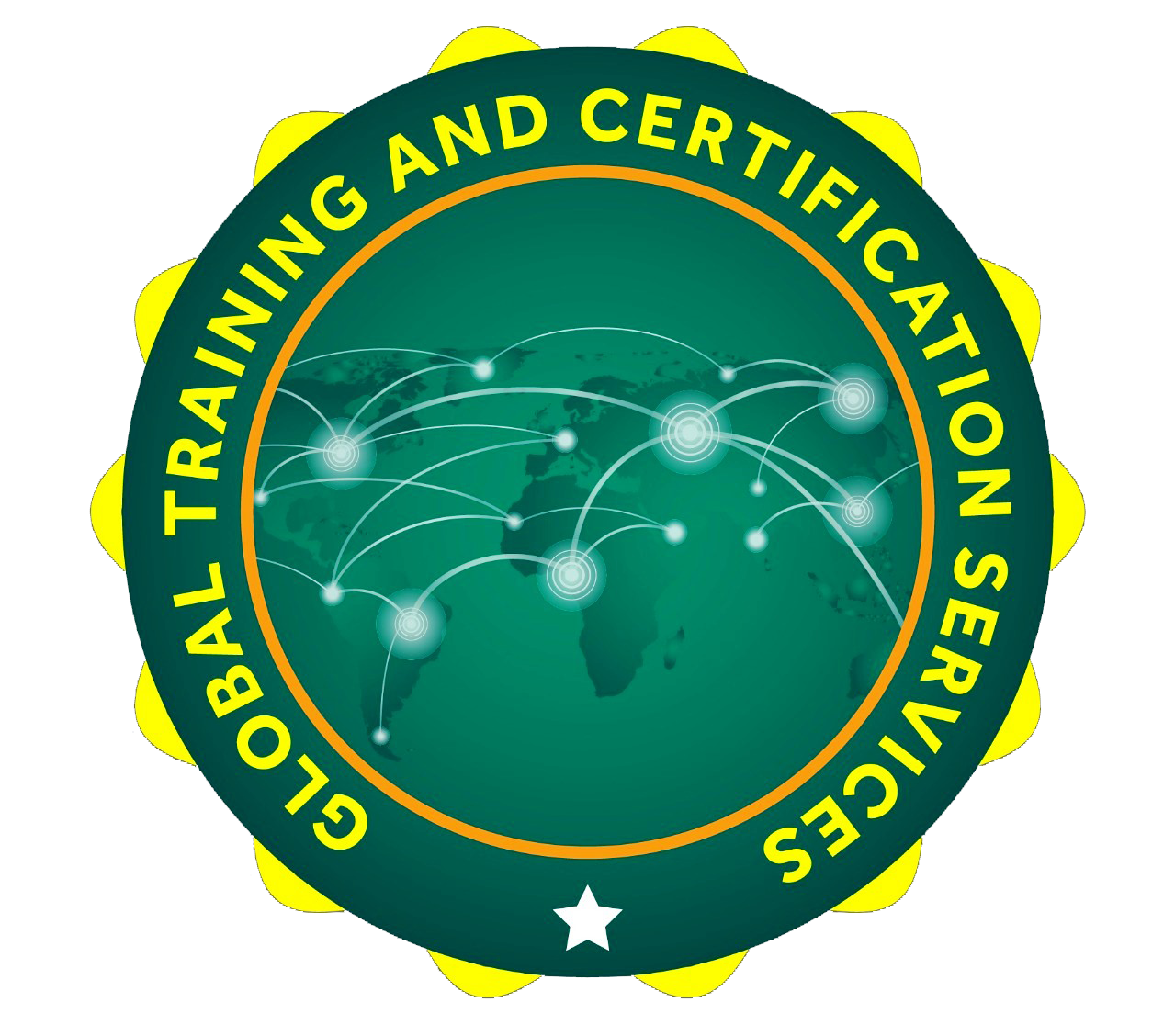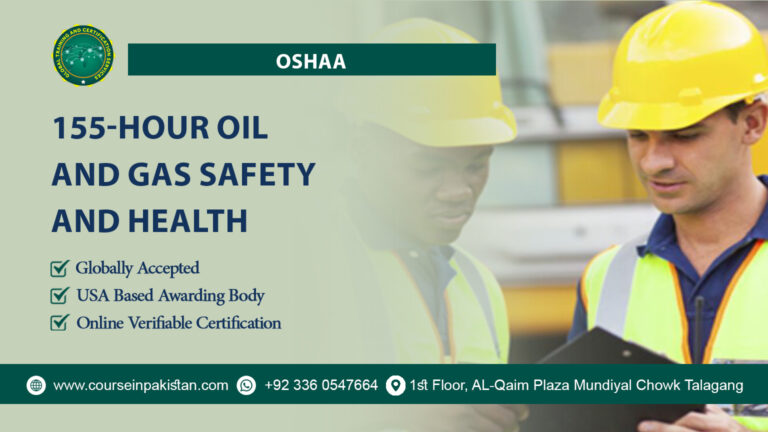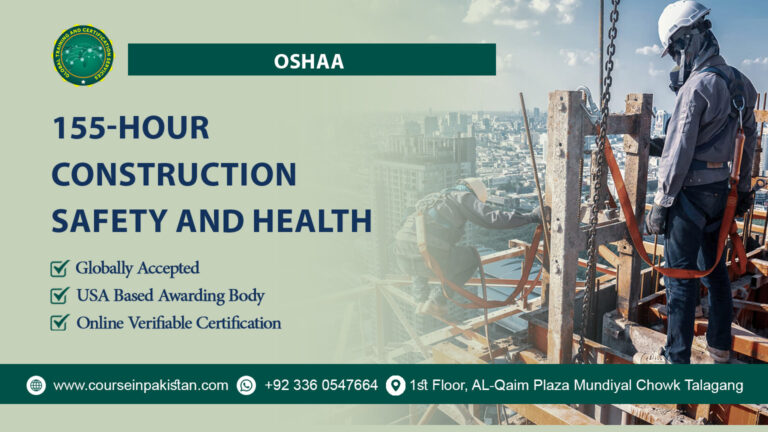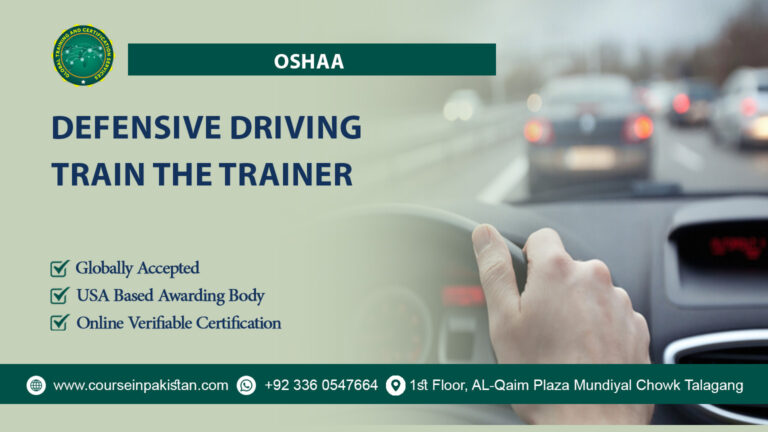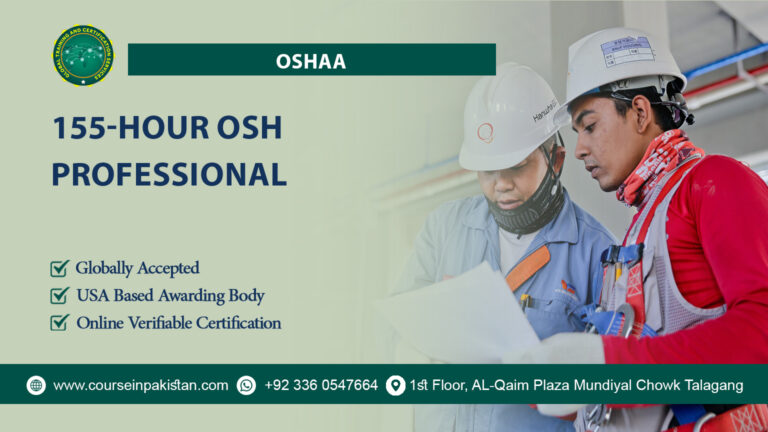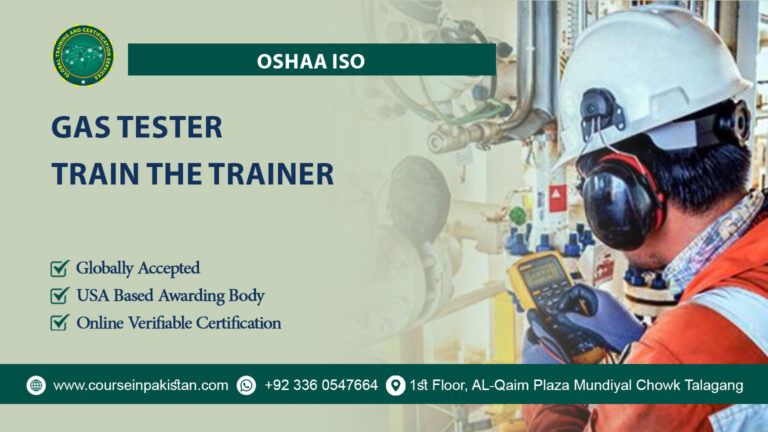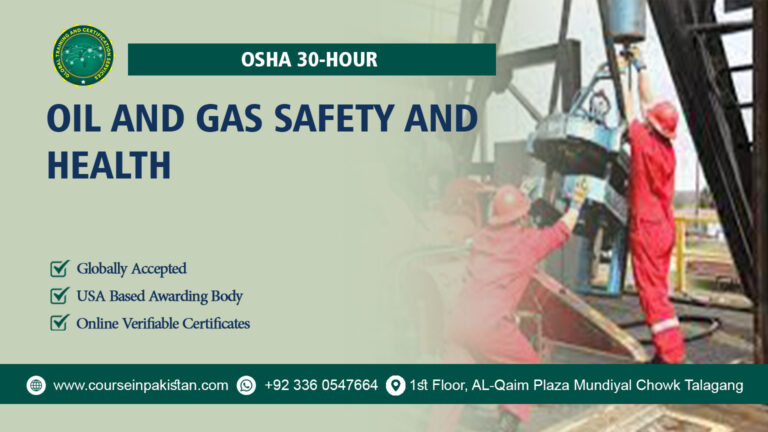
OSHA 132-Hour Construction Safety and Health
In the bustling world of construction, safety is not just a priority but a necessity. The Occupational Safety and Health Administration (OSHA) understands the unique challenges and risks faced in the construction industry and offers a comprehensive 132-hour Construction Safety and Health course to address these concerns. In this blog post, we will explore the various facets of this essential course, including its introduction, overview, benefits, study units, learning outcomes, target audience, and future progression opportunities.
The OSHA 132-Hour Construction Safety and Health course is designed to equip individuals with the knowledge and skills necessary to ensure safety and health on construction sites. With a focus on compliance with OSHA standards, this course provides in-depth training on a range of safety topics tailored specifically for the construction industry. It’s a critical resource for those looking to enhance their expertise in construction safety and move toward leadership roles within their organizations.
The course is structured to provide a thorough understanding of OSHA regulations and best practices in construction safety. Spanning 132 hours, it covers a wide array of topics pertinent to maintaining a safe construction environment. Participants will engage in detailed instruction on regulatory standards, hazard recognition, risk management, and effective safety practices. The curriculum is designed to be both comprehensive and practical, ensuring that participants can apply what they learn in real-world scenarios.
Course Benefits
Enrolling in the OSHA 132-Hour Construction Safety and Health course offers numerous benefits:
- Enhanced Safety Knowledge: Gain a thorough understanding of OSHA regulations and safety standards specific to the construction industry.
- Improved Risk Management: Learn how to identify, assess, and mitigate potential hazards on construction sites, thereby reducing the risk of accidents and injuries.
- Career Advancement: Certification from this course can open doors to advanced positions in safety management and compliance, giving you a competitive edge in the job market.
- Regulatory Compliance: Ensure that your construction practices meet OSHA standards, helping to avoid fines and legal issues related to non-compliance.
- Practical Skills: Develop hands-on skills in safety planning and accident investigation that are directly applicable to everyday construction activities.
Course Study Units
The course is divided into several study units, each focusing on critical aspects of construction safety and health:
- Introduction to OSHA and Construction Safety
- Regulatory Compliance in Construction
- Hazard Identification and Risk Assessment
- Process Safety Management (PSM)
- Emergency Preparedness and Response Planning
- Health Hazards in Construction
- Environmental Protection and Sustainability
- Safety Leadership and Culture
- Advanced Personal Protective Equipment (PPE)
- Safety Training and Education
- Contractor and Vendor Safety Management
- Regulatory Compliance and Auditing
Learning Outcomes
Upon successful completion of the course, participants will be able to:
-
Introduction to OSHA and Construction Safety
- Understand OSHA’s Mission and Scope: Demonstrate a comprehensive understanding of OSHA’s role and regulatory authority within the construction industry.
- Recognize Key OSHA Standards: Identify the essential OSHA standards and regulations that apply to construction sites.
- Apply Safety Protocols: Implement basic safety protocols and procedures in accordance with OSHA guidelines to promote a safe working environment.
Regulatory Compliance in Construction
- Interpret Regulatory Requirements: Accurately interpret and apply construction-specific regulatory requirements and standards.
- Ensure Compliance: Develop and implement compliance strategies to meet OSHA requirements and avoid regulatory violations.
- Prepare for Inspections: Understand the process and requirements for OSHA inspections and prepare necessary documentation to ensure readiness.
Hazard Identification and Risk Assessment
- Identify Common Hazards: Recognize and categorize common hazards encountered in construction environments.
- Conduct Risk Assessments: Perform thorough risk assessments to evaluate the potential impact of identified hazards.
- Implement Control Measures: Develop and apply effective control measures and risk mitigation strategies to minimize workplace hazards.
Process Safety Management (PSM)
- Understand PSM Principles: Explain the core principles of Process Safety Management (PSM) and its importance in construction projects involving hazardous processes.
- Develop PSM Programs: Design and implement PSM programs to manage risks associated with hazardous chemicals and processes.
- Monitor and Improve PSM Practices: Evaluate the effectiveness of PSM practices and continuously improve safety measures.
Emergency Preparedness and Response Planning
- Create Emergency Plans: Develop comprehensive emergency preparedness and response plans tailored to construction sites.
- Coordinate Response Actions: Coordinate emergency response actions effectively to manage and mitigate the impact of incidents.
- Conduct Drills and Training: Organize and execute emergency drills and training sessions to ensure readiness and improve response efficiency.
Health Hazards in Construction
- Identify Health Hazards: Recognize common health hazards in construction, such as exposure to toxic substances, noise, and ergonomic risks.
- Implement Health Controls: Apply controls and preventive measures to address and manage health hazards on construction sites.
- Promote Worker Wellness: Develop programs and practices to promote the overall health and wellness of construction workers.
Environmental Protection and Sustainability
- Understand Environmental Regulations: Identify and understand environmental regulations and their impact on construction practices.
- Implement Sustainable Practices: Develop and apply sustainable construction practices to minimize environmental impact.
- Monitor Environmental Compliance: Monitor and ensure compliance with environmental protection standards and practices.
Safety Leadership and Culture
- Develop Safety Leadership Skills: Cultivate leadership skills necessary for promoting and maintaining a strong safety culture on construction sites.
- Foster a Safety Culture: Implement strategies to build and sustain a positive safety culture that encourages proactive safety behaviors.
- Lead by Example: Demonstrate and promote best practices in safety leadership to influence and guide teams effectively.
Advanced Personal Protective Equipment (PPE)
- Understand PPE Requirements: Identify and understand the requirements for advanced personal protective equipment used in construction.
- Select Appropriate PPE: Select and recommend appropriate PPE for various construction tasks and environments.
- Train on PPE Use: Provide training on the proper use, maintenance, and limitations of advanced PPE to ensure worker safety.
Safety Training and Education
- Develop Training Programs: Design and deliver effective safety training programs tailored to the needs of construction workers and teams.
- Evaluate Training Effectiveness: Assess the effectiveness of safety training programs and make necessary adjustments to improve outcomes.
- Promote Continuous Learning: Encourage ongoing education and training to keep workers informed about the latest safety practices and regulations.
Contractor and Vendor Safety Management
- Assess Contractor Safety: Evaluate the safety performance and compliance of contractors and vendors working on construction projects.
- Manage Contractor Safety: Implement procedures to manage and monitor contractor safety practices to ensure alignment with OSHA standards.
- Integrate Safety Policies: Integrate safety policies and procedures into contractor agreements and vendor contracts to maintain safety standards.
Regulatory Compliance and Auditing
- Conduct Safety Audits: Perform comprehensive safety audits to assess regulatory compliance and identify areas for improvement.
- Address Compliance Issues: Develop action plans to address compliance issues identified during audits and ensure corrective measures are implemented.
- Maintain Documentation: Maintain accurate and up-to-date documentation related to regulatory compliance and auditing processes.
These learning outcomes ensure that participants gain a thorough understanding of each critical area of construction safety and are equipped with the skills to effectively apply their knowledge in real-world scenarios.
Who Is This Course For?
The OSHA 132-Hour Construction Safety and Health course is ideal for:
- Safety Professionals: Individuals responsible for ensuring safety and compliance on construction sites.
- Construction Managers and Supervisors: Those who oversee construction projects and need to ensure safety regulations are met.
- Project Managers: Professionals involved in managing construction projects who need to understand and implement safety standards.
- Workers Seeking Advancement: Construction workers looking to advance their careers by gaining specialized safety knowledge and certifications.
Future Progression for This Course
Completing the OSHA 132-Hour Construction Safety and Health course can serve as a springboard for further professional development:
- Advanced Certifications: Pursue additional OSHA certifications or specialized training in areas such as industrial hygiene or environmental safety.
- Safety Management Roles: Transition into higher-level positions such as Safety Manager, Safety Director, or Compliance Officer.
- Specialized Training: Engage in specialized courses focusing on areas like confined spaces, scaffold safety, or trenching and excavation.
- Continuing Education: Stay current with ongoing training and education to keep up with evolving safety standards and practices.
the OSHA 132-Hour Construction Safety and Health course is a valuable investment for anyone committed to improving safety in the construction industry. With its comprehensive curriculum, practical benefits, and potential for career advancement, it equips participants with the skills and knowledge necessary to excel in construction safety and health. Whether you’re looking to enhance your expertise or advance your career, this course provides a robust foundation for achieving your goals in construction safety
